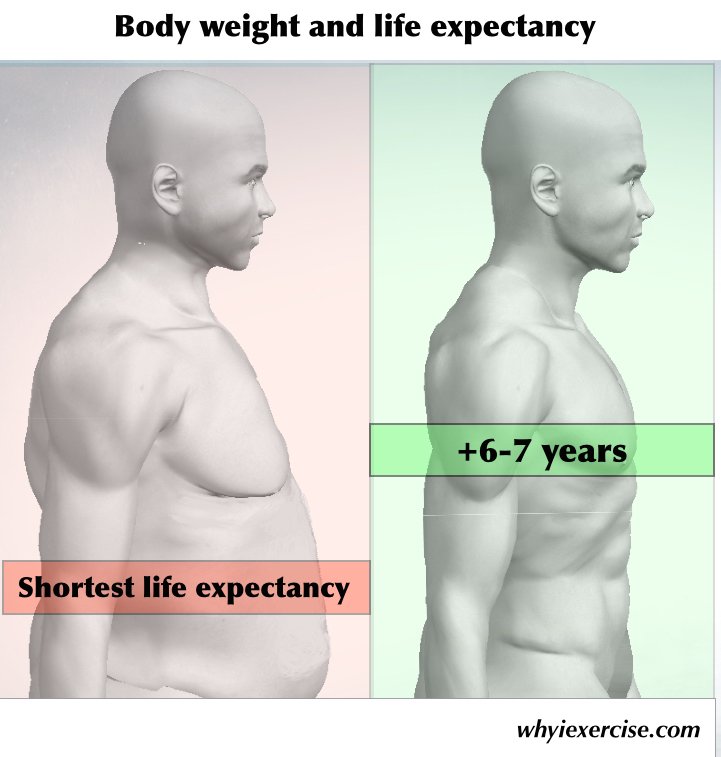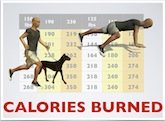Guide to healthy eating
12 keys for successful nutrition.
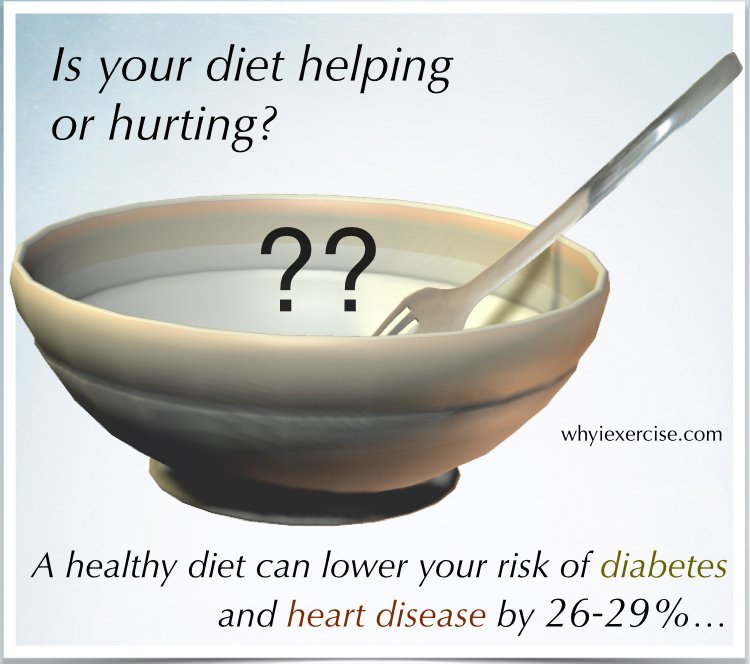
This guide to healthy eating gives you proven tips for weight loss, better health, and chronic disease prevention. Below you'll find out more about what to eat and what to cut back on (or eliminate). You'll also see more specific tips on organic food, red meat, dairy products and hydration. I also take on trendy topics like coconut oil, the paleo diet and the gluten-free diet. See if you can check off each of the 12 steps below and match the success of people who have maintained their health for years through good nutrition.
How much difference does it make to have a healthy diet?
A study of nearly 45,000 men showed that people who had the highest percentage of vegetables, fruit, legumes, whole grains, fish, and poultry in their diet had a 30% lower risk of developing heart disease than the average person. (Regular exercise helps just as much.) By contrast, those who ate the most refined grains, sweets and dessert, french fries, processed meat, red meat and high-fat dairy products, compared to the average person, had a 64% higher risk of heart disease (1).
12 steps for success
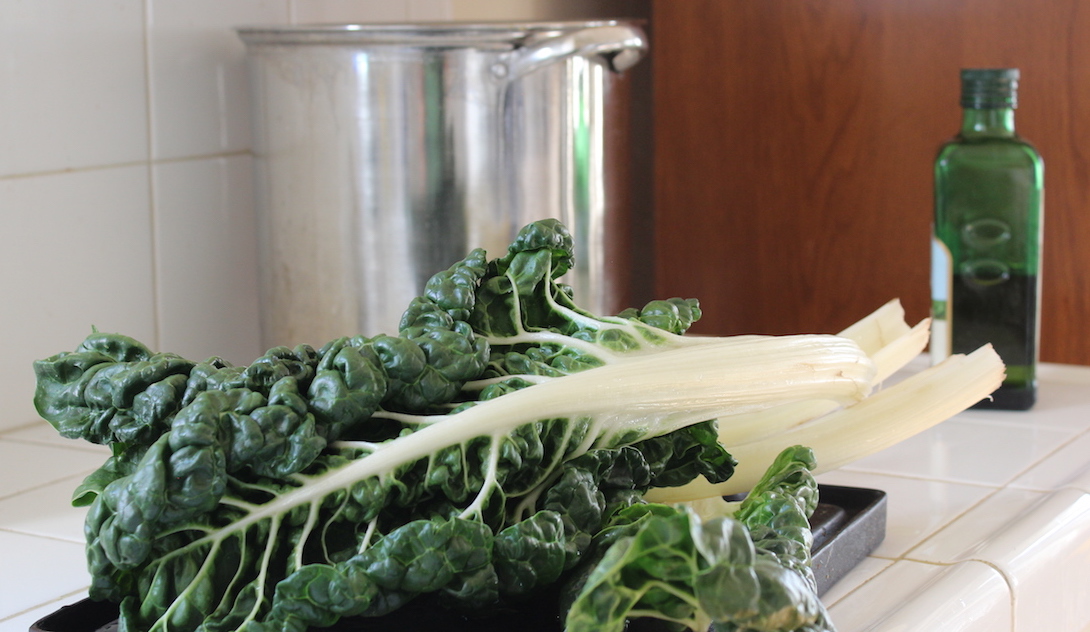
Step 1: Buy fresh vegetables and eat them liberally.
Green, leafy vegetables like spinach, kale, chard, bok choy and cabbage are nutrient dense (for only 18 calories, 1/2 cup of cooked chard gives you 25% RDA of Vitamin C and 50% of Vitamin A). Green leafy vegetables have been shown to lower chronic disease risk the most when compared to other fruits and vegetables (2). For preparation, you can lightly steam your vegetables, or sauté them with olive oil to add flavor and a healthy fat. You can also mix greens with other vegetables for variety. Another option is to blend leafy greens with frozen fruit into a smoothie.
Celery and carrots are a convenient on the go combo snack. There are many other possibilities: green beans, peas, mushrooms...get to know your produce aisle! Keep your favorite frozen veggies in stock just in case you can’t stop by the grocery.
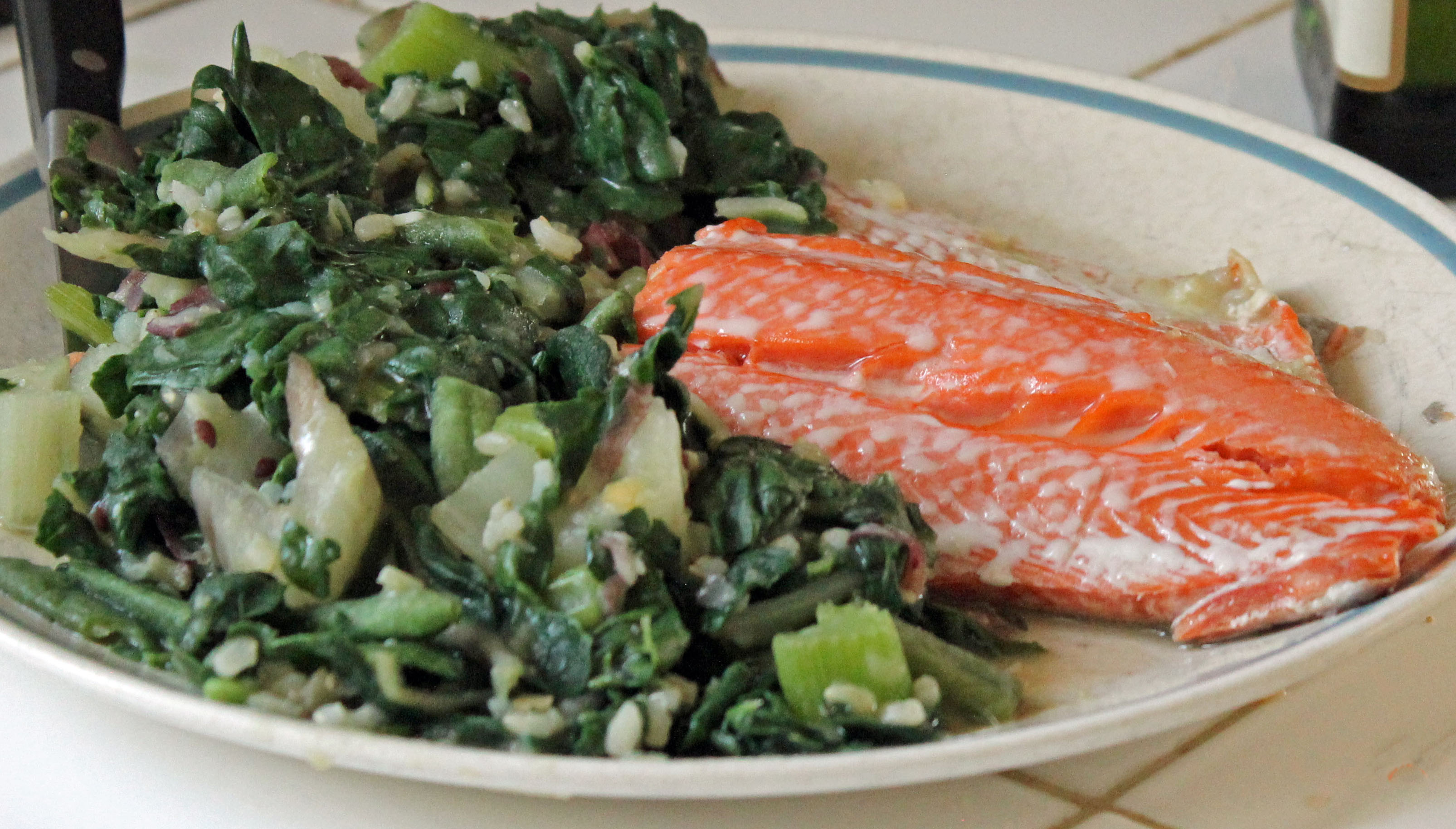
Step 2: Include fish and legumes as protein sources.
Include fish in your diet at least 1 time per week and you can reduce your risk of sudden cardiac death by more than 50%, when compared to monthly fish consumption (8). Wild caught salmon and trout have the highest concentration of omega-3 fatty acids, making them healthier than farm raised fish (17-18). When you eat out, ask if the fish is farmed or wild caught!
Eat legumes of all kinds: Lentils, black beans, split peas, northern beans, adzuki beans and more. These are best purchased dry and can be cooked in a slow cooker. Watch out for high sodium content with canned beans.
Among legumes, lentils are worth a special mention. They are the easiest to prepare and they have a great nutrient profile. 1 cup of boiled lentils has 15.6g of dietary fiber, 18 grams of protein, more than 35% of 4 key nutrients, and 15-25% RDA of 6 other nutrients--all in just 230 calories. For healthy eating, natural foods like lentils compete quite well with packaged, processed protein bars (15).
Step 3: Eat fresh fruit of all kinds.
This is an easy to overlook, common sense step. Aim for variety, as different types of fruit offer different nutrients. And of course, in season fruit will be more fresh. In other words, try in-season local berries or peaches from the farmers' market in the summertime. They should taste better than the pears from Argentina at the grocery store and your body will benefit from a different mix of phytochemicals and antioxidants.
2-3 servings per day. Replace fruit juice (or soda) with whole fruit and you can significantly lower your risk of diabetes (6).
Step 4: Switch to whole grains.
Eat brown rice and other whole grains like whole oats and barley. Get rid of regular pasta, white rice and other grains that have been processed. Is your diet low in fiber? Increase your daily dietary fiber from grains by 10 g, and you may reduce your risk of heart attack by up to 29%. 3 servings per day are generally recommended. (3-5). Other current studies show significant reduction in risk of diabetes by consuming whole grains in place of refined grains.
Notes: 1) The gluten-free diet is considered the medical standard of treatment for people who have celiac disease and wheat allergy. However, there is no current evidence to support claims that gluten (the protein component in wheat, barley and rye) is not healthy for the general public to consume. Research appears to be incomplete for using the gluten-free diet for treatment of arthritic, autoimmune, neurologic and chronic fatigue symptoms. (26, 27)
2) The Paleo diet, which advocates completely eliminating grains from your diet, does not have nearly the body of evidence to support it as does a moderate intake of whole grains along with other healthy foods. I found 1 study on Medline showing a comparably lower risk of colorectal cancer for both the Paleo and Mediterranean diets. (28) Other studies I've seen thus far involve 30 subjects or less. Though I have several friends I respect who strongly support the paleo diet for weight loss and fitness performance, I recommend a 'wait and see' approach to paleo in this guide to healthy eating.
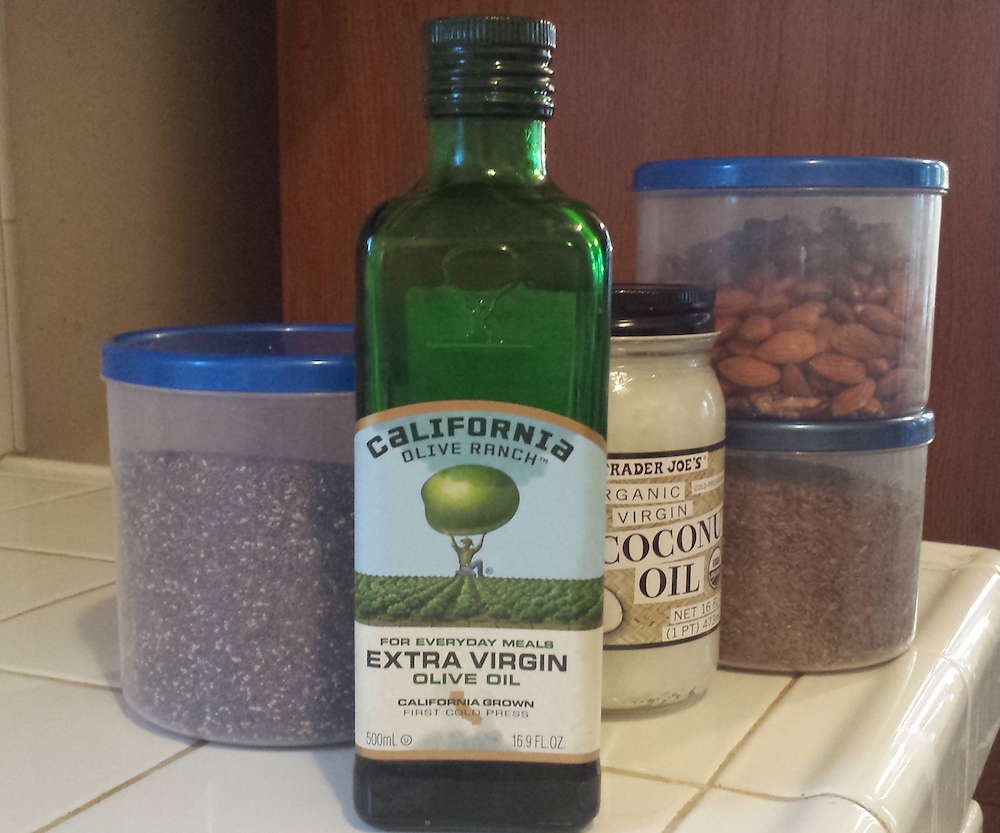
Step 5: Choose the healthiest fats.
Among oils used for dressing and cooking food, olive oil is most widely recognized for it's health benefits in the literature, especially when incorporated as part of the Mediterranean Diet. Other oils that contain favorable fat profiles include flaxseed oil and walnut oil*. Look for virgin, expeller pressed oils. When cooking vegetables such as tomato and eggplant, cooking oil helps prevent damaging the antioxidant capacity of the vegetables, per a 2015 study (23). When cooking with oil, keep the heat low, below the smoking point, to avoid degrading the beneficial fats in the oil.
Nuts are a healthy snack, especially when combined with fruits or vegetables (11). Raw nuts are best, followed by dry roasted / low sodium. Try different kinds of nuts as they have varied nutrient profiles, tastes and mineral content. Nuts will also contribute to your protein intake. In addition, chia, flax and or hemp seeds can be added to your grain dish or smoothie, which would give you a fiber boost at the same time.
*Coconut oil, as of 2015, has not been studied sufficiently to determine it's health benefits other than causing a rise in HDL cholesterol. The smart choice for now, per Walter Willett, MD of Harvard Public Health, would be to use it less often than the other oils.
Step 6: Choose lean and low fat poultry, red meat and dairy.
There is limited evidence for cholesterol going up due to eating saturated fat and cholesterol in dairy, eggs and meat (21). However, the fats above (Step 5) have greater health benefits than saturated fat. So the recommendations in this article on nutrition are to eat lean meat and consume low fat dairy products. Then you can get the majority of the fat in your diet from oils, seeds and nuts. As stated earlier, a diet favoring fish and poultry over red meat may offer a lower risk of heart disease.
A review of 9 studies on red meat consumption showed a 10% increased risk of all cause mortality for an average intake of 100g (roughly 1/4 pound) of red meat per day. (24) Other studies show mixed results. I personally choose to eat red meat every 10 days or so. This allows me to benefit from the varied nutrient content (more iron and zinc, for example, than chicken and fish(16)) and I remain well under the 100g / day threshold cited in the study.
When you eat red meat, opt for grass fed beef, which has a significantly higher percentage of omega-3 fatty acids than conventionally fed beef. Grass fed beef has enough omega-3s to improve your cholesterol level (14), and it is also leaner than regular beef. Beef is also a good source of vitamin B-12. As with beef, free range, pasture-fed chicken has a higher omega-3 fatty acid percentage than conventionally fed chicken (20).
As for dairy products in particular, the nutrition guidelines of most countries recommend 2-3 servings of dairy per day, and analysis of US dietary patterns show nutritional deficiencies for those who cut out milk, cheese and yogurt altogether. Dairy products supply key nutrients that are difficult to obtain through other foods. (29) Also, consuming dairy products appears to lower risk of cardiovascular disease. (30)
Now that you have the additions you need for your diet, steps 7-8 of my healthy eating guide show you which foods need to come off your shelves and out of your refrigerator.
Step 7: Cut back significantly on food products high in sodium.
Start with processed deli meats and various kinds of snacks, like chips. When shopping, look for fewer milligrams of sodium per serving than calories in the food product. This will help you stay below the WHO recommended sodium level of 5000 mg / day, which will lower your risk of stroke, high blood pressure and heart disease (19).
Step 8: Eliminate sugar from your regular diet.
Not to be overlooked when it comes to healthy eating, sugar adds calories without offering vitamins or minerals. 3 helpful hints to reduce sugar intake:
a) View sodas, coffee drinks, ice cream products, candy and sugary snacks as a novelty, not something that is part of your regular routine.
b) Stop buying sodas (including diet soda), energy drinks, and sugary cereals as they offer little health benefit. Instead, drink filtered water, with fresh lemon or lime juice if desired.
c) For variety, try green tea or other herbal teas (with a little honey if you like)
Step 9: Reduce your portion sizes.
In our eating-focused culture, cutting back on food intake is the toughest change you can make, but it gives the best results for weight loss. Eat slowly, and aim to feel satisfied, not stuffed, when you finish eating each meal. 1-2 healthy snacks (i.e. fruit or veggies and nuts) and a glass of water can help you maintain energy throughout the day.
Besides losing weight, how often do you hear friends remark of how much better they feel while on a “cleanse diet” or while using a weight loss meal replacement shake. Restricting calories has been shown to enhance vitality and even longevity in living creatures of all kinds. (13-15)
For dieting, an intake of 1200-1500 calories per day is generally recommended. Smaller people with less muscle mass aim for 1200 calories. Use very small snacks to replace meals for more rapid progress in weight loss. Be sure not to follow the small snack with a large meal! To be healthy you need to eat well and move well, so naturally, my healthy eating guide recommends exercise as well, which will help reduce blood pressure and cholesterol and improve your insulin sensitivity.
Note: If you are consuming all the above healthy foods, carbohydrate / fat / protein ratios can be adjusted to your preference, and your general health results should remain the same (12).
Step 10: Prepare your own meals more often.
When you eat out, you have no idea what the sodium, fat, or calorie content of your food is. The health benefits of your meal will be much better at home than at most restaurants, so try to limit eating out to 1-2 times per week. When you do eat out, eat small portions to avoid excessive calories and sodium (19).
Step 11: Buy organic produce when possible.
The potential health benefits of reduced pesticide exposure are important enough for a recommendation in this guide to healthy eating. These vegetables hold the most pesticides, so try to buy them organic: Bell Peppers, Celery, Spinach, Kale, Collards, Lettuce and White Potatoes. For fruits, buy organic for: Peaches, Apples, Pears, Nectarines, Strawberries and imported Grapes (22).
Step 12: Stay hydrated.
Hydration is important because it has been shown to enhance mental functioning and athletic performance, as well as weight loss. Hydration protects your kidneys, prevents exercise related asthma and may prevent headaches. So how do you know whether you're getting enough fluid? Measuring your level of hydration is not an exact science. Requirements for any one person vary depending on activity level, calorie consumption, and weather conditions.
General recommendations in the literature are 2.0-2.7 L of fluid intake for adult women and 2.5-3.7 L for men. (The higher range in fluid recommendations is determined by calories consumed, that you would need 1.0-1.5 L of fluid for every 1000 calories you consume.) Note that the recommendations are for total fluid intake, which would include fluids from food. A diet high in vegetables and fruits, then, would require less water than otherwise. (25)
Related articles
If you tend to regain weight after starting a diet & exercise program, try a new perspective. Overweight is evidence of a lifestyle that needs to change. See my weight loss tips to get started.
Calories burned during exercise
Comparing the calories burned during exercise can help you pick activities and plan workouts that help you lose weight faster. Compare 30 activities. Estimates are given for men and women in three weight classes.
Return from article on nutrition to weight loss tips.
Return to home page: Why I exercise.
